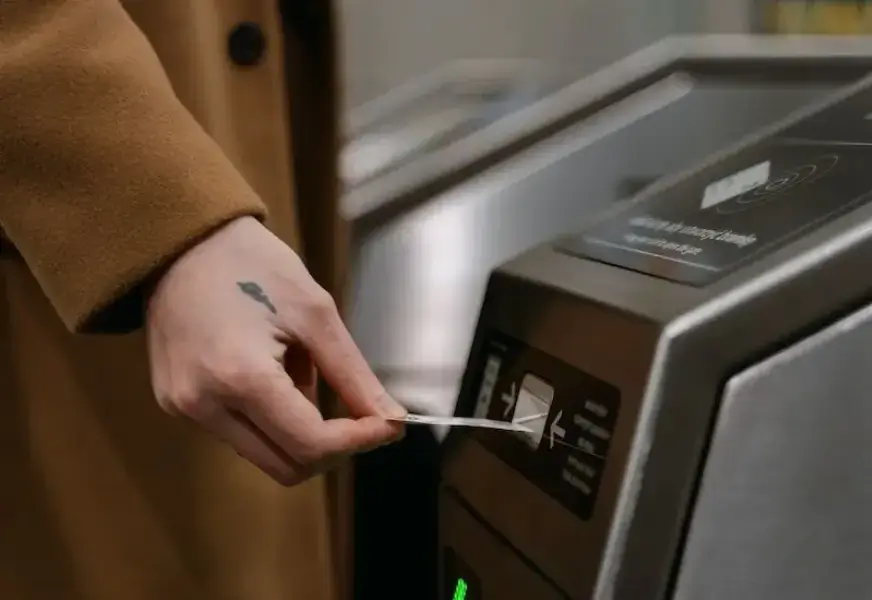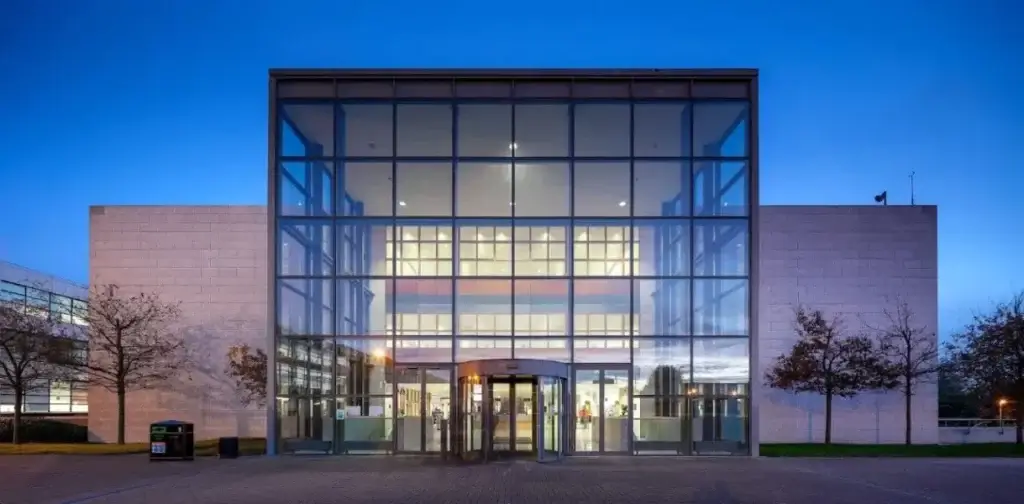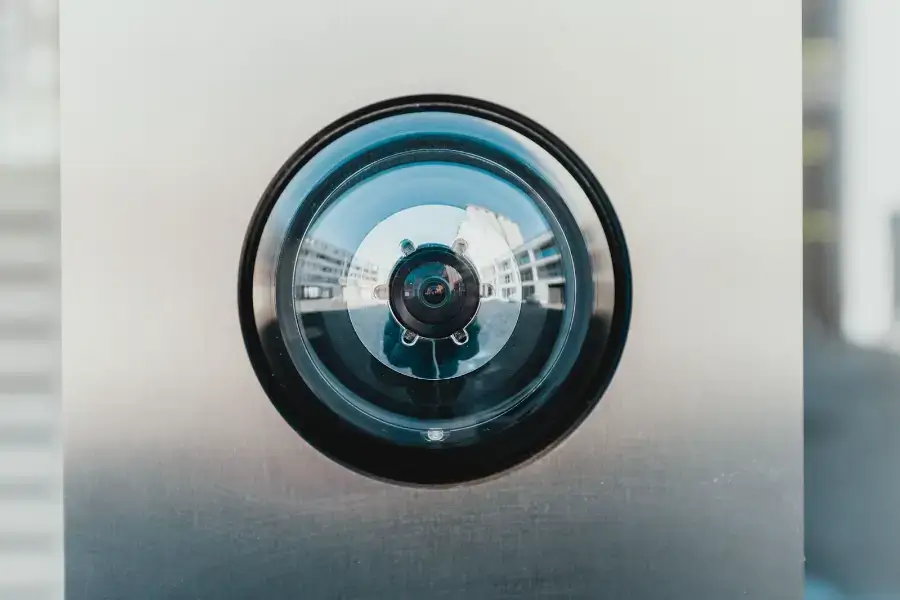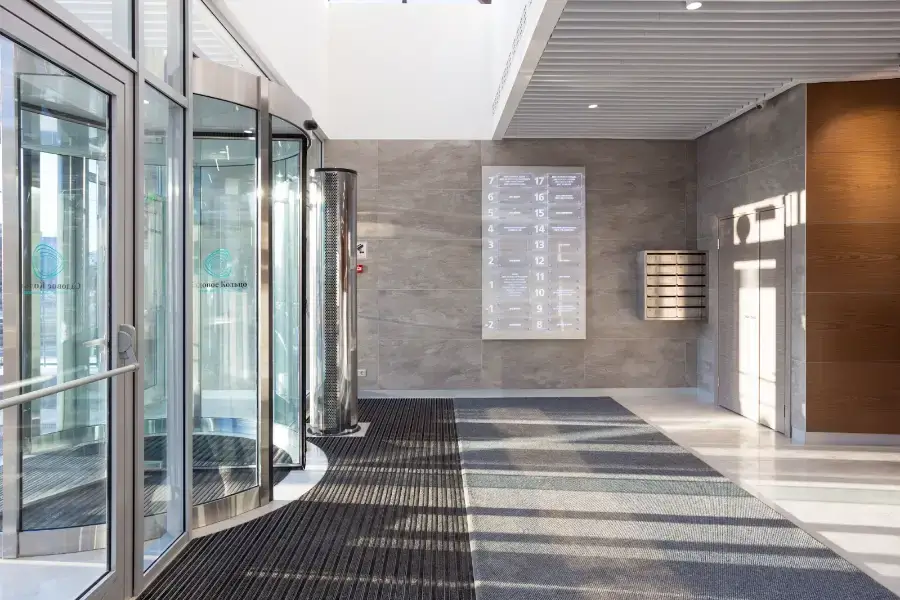Written By: Brad Campbell | April 19, 2025
Access control systems are a vital component of a multi-layered approach to commercial security.
Whether it’s for a retail store, a school, a government facility, an office building, or any other type of commercial property, these systems play an important role in controlling and monitoring the flow of people in and out of a building.
For example, access control implementation in schools can greatly increase the security of entryways and classrooms, facilitating lockdowns and reducing the risk of potentially threatening individuals gaining access to areas where they could harm students and staff.
Because access control systems serve to secure a building’s entry points, they are also an important part of fenestration security, or the protection of windows, doors, and other openings against forced entry and other threats.
In its broadest sense, “access control” is a term that refers to restricting access to an area, which could be an entire building or specific areas within a facility. Access control systems are the tools and technologies that facilitate this.
A door that can only be opened by punching a password into a keypad or swiping a keycard is an example of such a technology.
Other examples of access control systems include security gates and turnstiles, biometric locks on doors, and even physically present security personnel that grant access to a building or area.

Access control systems are essential for maintaining safety, security, and operational efficiency in commercial facilities, protecting these spaces against both forced entry and theft and threats to the physical well-being of building occupants, including active threats.
Here are a few common applications of access control systems in commercial properties:
1. Protecting High-Security Areas
Access control systems safeguard critical areas, such as areas where sensitive information is stored in government buildings or inventory rooms in high-end retail stores, by limiting access to authorized individuals.
2. Increasing Workplace Safety
Access control can help prevent workplace incidents by ensuring that only trained or certified personnel enter hazardous zones, such as laboratories or industrial facilities.
3. Streamlining Visitor Management
Systems that employ keycard or biometric access control provide an efficient way to track and manage visitor entry while maintaining security for employees and assets.
4. Supporting Emergency Response Plans
During emergency scenarios, such as active threat situations or civil unrest, access control systems can automatically lock or unlock doors and prevent intruders from gaining access to areas where they can do the most harm or damage.
As we touched on earlier, “fenestration security” relates to the security of a building’s windows, doors, and various other openings — fenestration means all the openings in a building’s facade.
Any commercial building’s most vulnerable points are typically its windows and doors. Even if a building’s doors are all locked and monitored, it’s often still possible for criminals to force entry by breaking a pane of glass and opening a door from the inside using its emergency egress mechanism.
Because of these vulnerabilities, access control and fenestration security go hand in hand — access control systems restrict who can enter and exit a facility or building while fenestration security measures prevent would-be intruders from forcing entry through a glass door or window.
It’s virtually impossible to have effective access control systems without implementing other physical barriers that prevent forced entry. In other words, a complete and effective fenestration security plan will always feature access control methods, and vice versa.

The best way to ensure access control systems remain uncompromised is to reinforce vulnerable windows and doors — all glass surfaces that an intruder could viably reach — with forced entry-resistant security glazing, such as Riot Glass.
Riot Glass commercial security glazing is incredibly versatile and can often be retrofitted onto an existing door or window framing system, meaning it can be installed without removing or replacing the existing glass.
The type of existing glass doesn’t really matter because this security glazing’s strength isn’t impacted by the underlying material. It simply creates a virtually unbreakable barrier over the existing glass, protecting it from forced entry attempts and other impacts.
The security glazing itself is totally see-through and feels just like regular glass, so it doesn’t compromise visibility, natural light, or curb appeal.

However, if a would-be intruder attempts to smash through the security glazing to bypass an access control system, their attempts will bounce right off. This delays and deters forced entry, causing criminals to move on and look for easier targets.
In the unfortunate event of an active threat scenario, the combined security provided by access control systems and Riot Glass security glazing gives building occupants time to react to an attack by running, hiding, barricading themselves inside, and waiting for law enforcement to arrive and neutralize the threat.
Combining access control with security glazing creates an incredibly strong, multi-layered physical security system that can withstand a full range of threats, including:
It’s still important to combine these measures with other commercial security system components, such as video surveillance and alarm systems, but access control systems and Riot Glass do one key thing that cameras and alarms don’t: physically keep the bad guys out!

Before you begin making any changes or upgrades to your commercial property’s security design, it’s recommended to get a threat assessment done to help you understand which areas are most vulnerable and require extra security measures.
A threat assessment is an evaluation provided by a security expert, who does a full walkthrough and analysis of your property to determine potential vulnerabilities and risks and provide actionable recommendations on how to address them.
In the context of what we’ve discussed above, a threat assessment is used to figure out where access control systems are needed and where security glazing should be retrofitted, as well as what types of systems and materials to implement.
If you’re considering different access control systems for your property, there are a couple of factors to consider before making your decision.
First, consider what type of credentials you want people to use to unlock and enter your building’s controlled areas.
For instance, do you want your doors to be unlocked using a keycard or a password? These types of systems can provide a similar level of security, but keycards can potentially be lost or stolen, while passwords have to be remembered.
Alternatively, you can use mobile device-based access control credentials. These allow people to use their smartphones to get past the access control point.

As with most security systems integrated with smartphones, these types of access control systems also have multi-factor authentication built in, preventing misuse. Plus, even though it’s possible for a smartphone to get lost, it’s much less likely for an employee to misplace their own phone than it is for them to misplace a key card.
Another access control option is implementing entry points manned by security personnel. While this will undoubtedly cost significantly more than unmanned access points, the presence of security guards is one of the biggest deterrents to unauthorized entry attempts.
Ultimately, the type of system you choose for controlling access to your facility comes down to your unique security requirements, personal preferences, and budget.
You’ll also need to be mindful of the management and maintenance that any access control system requires, so be sure to consider these factors when planning your budget.
Retrofitting a commercial property with security glazing is actually much more straightforward than choosing your access control systems.
It typically comes down to installing forced entry-resistant glazing over all the exterior glass surfaces that a would-be intruder could potentially reach and attempt to break through to force entry.
For a high-end retailer, for example, this would mean retrofitting all storefront display windows and glass entryway doors with the glazing.

In most commercial applications outside of extremely high-security facilities, something like containment-grade (non-ballistic) ArmorPlast AP25 typically offers more than enough glass protection to mitigate common threats like burglary, smash-and-grab theft, and rioting and looting.
In fact, containment-grade ArmorPlast can even get riddled with bullets without shattering or yielding, ensuring access denial and keeping attackers out and away from people inside during a worst-case active threat scenario.
For more high-security facilities, such as government buildings, schools, or high-risk retail environments, you can always install ballistic-grade (bullet-resistant) Riot Glass or ArmorPlast wherever a higher level of protection is desired.
Ballistic-grade Riot Glass is still fully forced entry resistant, but provides the added benefit of being able to withstand ballistic attacks, stopping several bullets from specific types of firearms. The specific level of bullet resistance is indicated by the glazing’s UL 752 rating.
Just as with choosing what type of access control systems to implement, your specific security needs and budget play a big role when determining what security glazing to implement. You may find that using a combination of different types of glazing for different areas makes the most sense in terms of striking a balance between security and expense.

Fenestration security and access control are two of the most important pillars of commercial building security — you can’t have one without the other.
While access control systems help monitor and control the flow of people in and out of a building and between restricted and public areas within the facility, it’s essential to implement physical barriers to forced entry alongside these systems to ensure their effectiveness.
Riot Glass is committed to providing the absolute best, most cost-effective fenestration security solutions to complement your access control. We offer soup-to-nuts service, from manufacturing, through threat assessment, to installation. Contact us today for a consultation!

HOW CAN WE HELP YOU?
